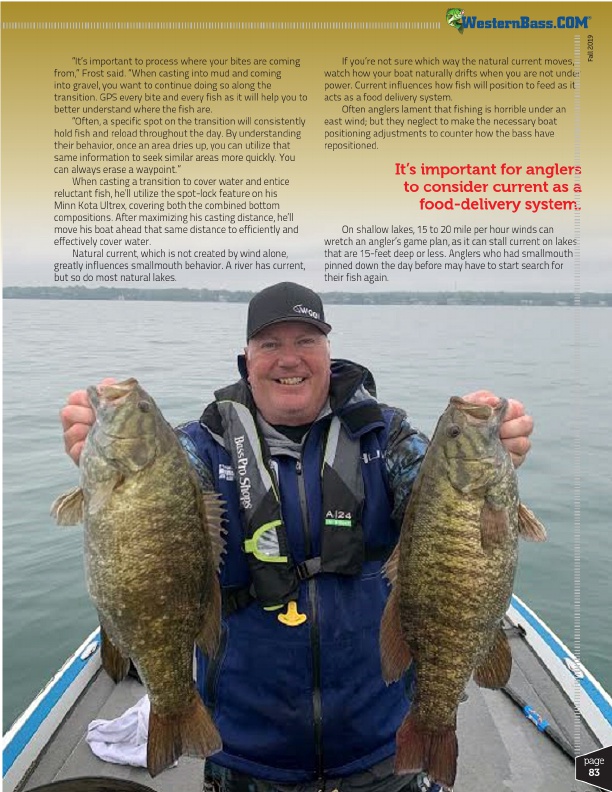
Fall 2019
®
“It’s important to process where your bites are coming from,” Frost said. “When casting into mud and coming into gravel, you want to continue doing so along the transition. GPS every bite and every fish as it will help you to better understand where the fish are.
“Often, a specific spot on the transition will consistently hold fish and reload throughout the day. By understanding their behavior, once an area dries up, you can utilize that same information to seek similar areas more quickly. You can always erase a waypoint.”
When casting a transition to cover water and entice reluctant fish, he’ll utilize the spot-lock feature on his Minn Kota Ultrex, covering both the combined bottom compositions. After maximizing his casting distance, he’ll move his boat ahead that same distance to efficiently and effectively cover water.
Natural current, which is not created by wind alone, greatly influences smallmouth behavior. A river has current, but so do most natural lakes.
If you’re not sure which way the natural current moves, watch how your boat naturally drifts when you are not under power. Current influences how fish will position to feed as it acts as a food delivery system.
Often anglers lament that fishing is horrible under an east wind; but they neglect to make the necessary boat positioning adjustments to counter how the bass have repositioned.
It’s important for anglers
to consider current as a
food-delivery system.
On shallow lakes, 15 to 20 mile per hour winds can wretch an angler’s game plan, as it can stall current on lakes that are 15-feet deep or less. Anglers who had smallmouth pinned down the day before may have to start search for their fish again.
page 83